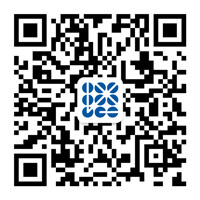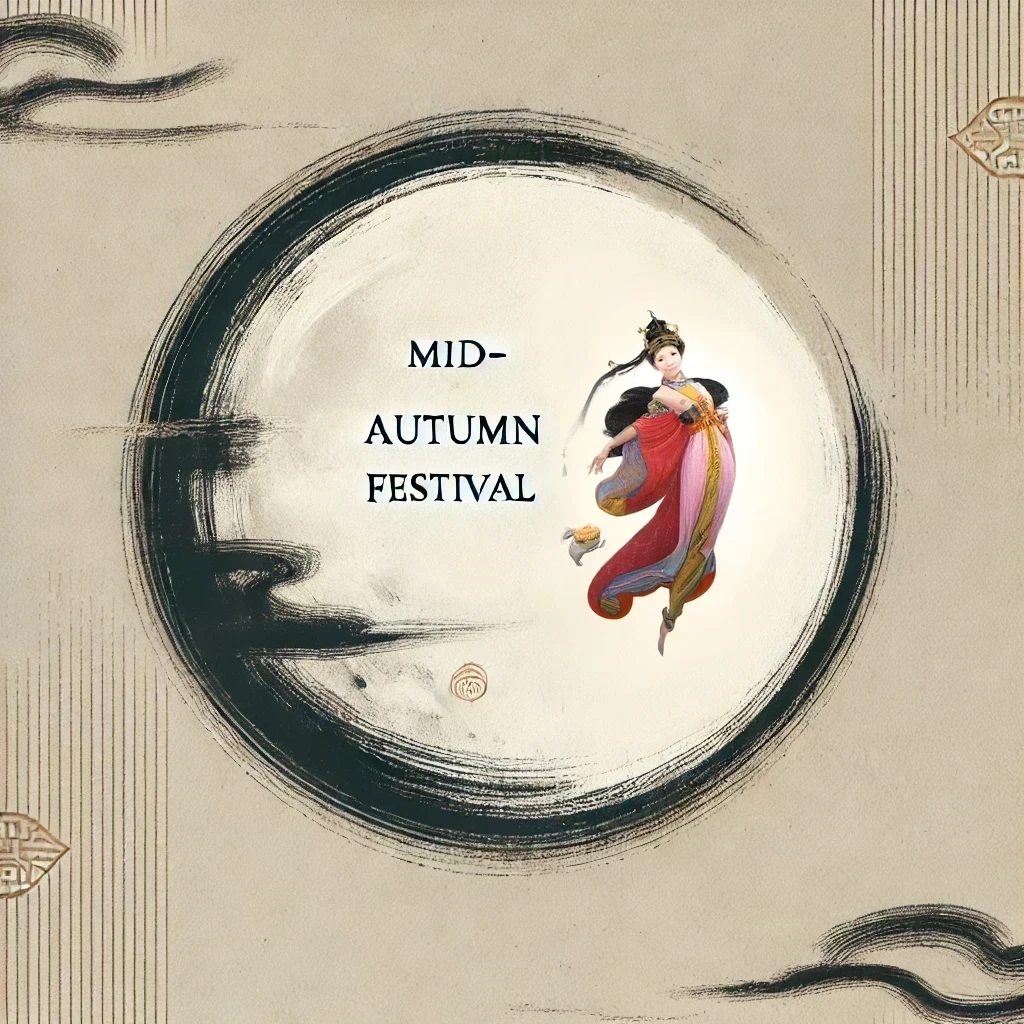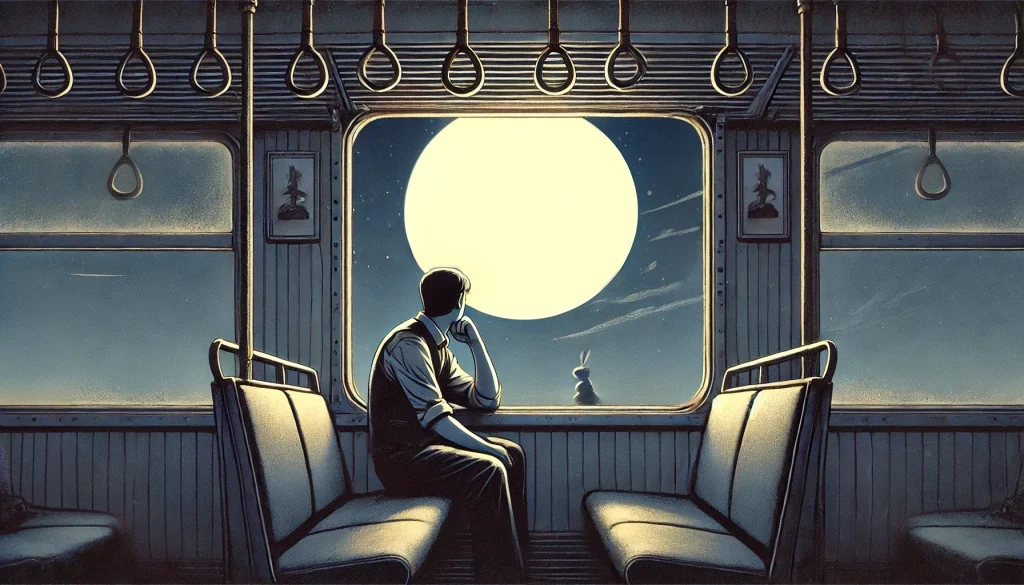Contents
Introduction:
The Chinese Mid-Autumn Festival, celebrated on the 15th day of the eighth lunar month, is one of the four major traditional Chinese festivals, alongside the Spring Festival, Qingming Festival, and Dragon Boat Festival. In China, the moon is not only a symbol of mythology but is also closely related to the ancient seasonal calendar. In ancient times, the year was divided into two seasons: spring and autumn, with autumn being the focal point of the entire year. The moon was the most important symbol of autumn. The full moon on Mid-Autumn night represents people’s pursuit of completeness and perfection, while also holding a mysterious aura of separation and solitude. The myths, rituals, and sense of reunion surrounding the moon contribute to our unique experience of the Mid-Autumn Festival. Today, even though this is the only article I am posting late, I want to tell a new mythical story to express the uniqueness of this special day in the Chinese Mid-Autumn Festival.
The Unique Myth of the Chinese Mid-Autumn Festival: The Transformation of Chang’e’s Journey to the Moon
In ancient China, the legend of Houyi shooting down the suns was widely known: Houyi used his bow and arrows to shoot down nine scorching suns, bringing life back to the land. he one left behind is the sun. We have also been familiar with the story of Chang’e flying to the moon since childhood. Chang’e, to preserve her life, swallowed the elixir of immortality and left her beloved husband, Houyi, ascending to the Moon Palace. In the past, I struggled to understand why Chang’e chose to leave in solitude. Every year, people commemorate Chang’e on this day because she achieved immortality. This story has always been hard for me to understand. The story’s description of ten suns scorching the earth seems to reflect a catastrophic event in ancient times. How did the ancient people envision such a world-destroying scene? Perhaps there is a more terrifying picture hidden behind this myth: temperatures suddenly soared, and all living things withered. At that critical moment, Houyi appeared, shooting down nine suns and saving the world. Yet, Chang’e abandoned him, flew to the moon, and left Houyi alone on earth, yearning for his wife every year. Is this story true? I don’t believe it.
I often ponder, could this merely be an ancient myth, or could it be reinterpreted? When I was young, I imagined that this story might actually tell of a natural disaster in ancient times: nine asteroids were hurtling toward Earth, though the sun was not one of them. During that time, human civilization was on the brink of collapse, with only two scientists remaining—Houyi and Chang’e. These nine were not actual suns, but rather satellites flying through the sky, one of which eventually stopped and transformed into the moon. They were the only ones who could prevent this catastrophe. Using nine explosions, they blocked the nine asteroids. However, one more asteroid continued to fly toward Earth, and they only had one atomic bomb left, but it was inoperable. Therefore, they decided to use a spaceship to collide directly with the final asteroid, stopping it, causing it to explode and preventing it from hitting the Earth. The last one was stopped by a spaceship carrying an atomic bomb, eventually turning into the moon.
Houyi and Chang’e, this couple, made a decision. Houyi was originally prepared to sacrifice himself for this mission, but in the end, Chang’e resolutely took his place. She piloted the spaceship into the universe, transforming herself into the bright moon that forever stays in the sky. This is my interpretation of Chang’e’s journey to the moon: she is not only a figure in a myth but also a hero who chose to take on fate alone. I believe this represents the power of love and is the true meaning of Chang’e’s journey to the moon. Perhaps, this is the mythical story of the Chinese Mid-Autumn Festival.
Rituals and Mooncake Reunion in the Chinese Mid-Autumn Festival
The origins of the Mid-Autumn Festival can be traced back to ancient autumnal sacrificial activities. Back then, the Mid-Autumn Festival was not only a celebration of the autumn harvest but also an important occasion for family reunion. The joy of harvest, accompanied by the warmth of family, allowed people to feel the deepest warmth on this day. Whether it was for the sake of surviving hardship or supporting a family, everyone had to put in their utmost effort, even though life was full of challenges. But on this day, everyone should take a moment to relax and gather with their loved ones. For example, children would feel especially happy when their parents took them out to play or enjoy delicious food. Most importantly, for children, happiness is easily found.
However, as time goes by and as each of us grows up and experiences life’s joys and sorrows, we come to realize that reunion might just be a state of mind. It is not only about gathering with family but also about gratitude for life and hope for the future.
In the blink of an eye, fifteen years passed, and I never really wanted to eat mooncakes because they were too easily available in supermarkets. But this year, on this Mid-Autumn Festival, I suddenly had a real craving for a mooncake. Whether it’s sweet or savory, I just wanted to taste it. Perhaps this represents the changes brought by time and the meaning of life.
Conclusion:
On the night of the Chinese Mid-Autumn Festival, we see the most perfect moon, which also brings a sense of completeness and imperfection. What comes to my mind is Su Shi‘s famous poem: “人有悲欢离合,月有阴晴圆缺,此事古难全。但愿人长久,千里共婵娟。”
English Translation by myself:
“People are subject to changes of sadness and parting, leaving and reunion, just as the moon is changed between being full and crescent, cloudy and clear. So that we may share the beauty of the moon together even if we are miles apart.”
Published by: Mr. Leo Mao. You are welcome to share this article, but please credit the author and include the website link when doing so. Thank you for your support and understanding.




